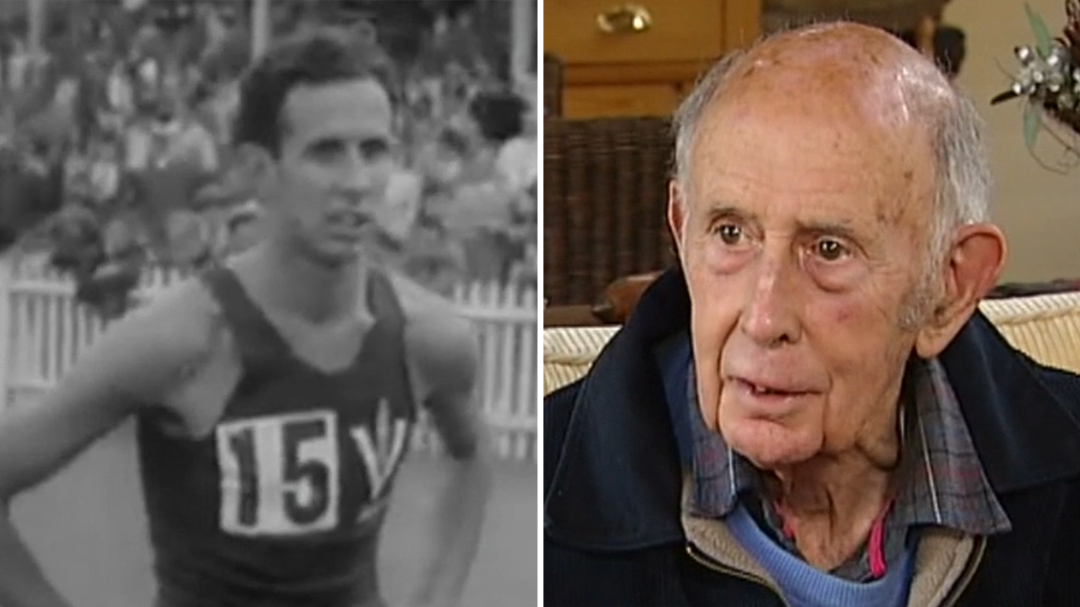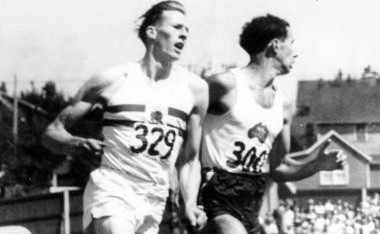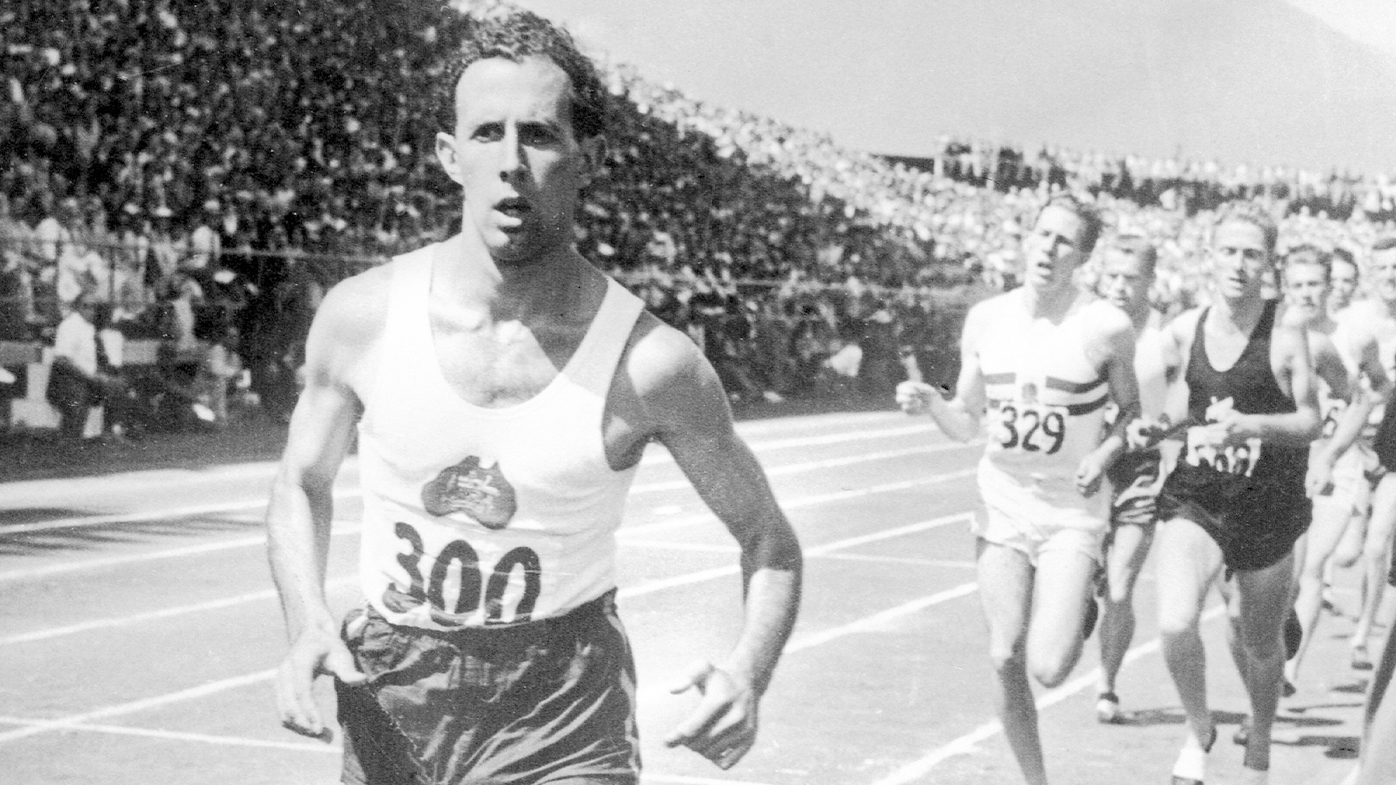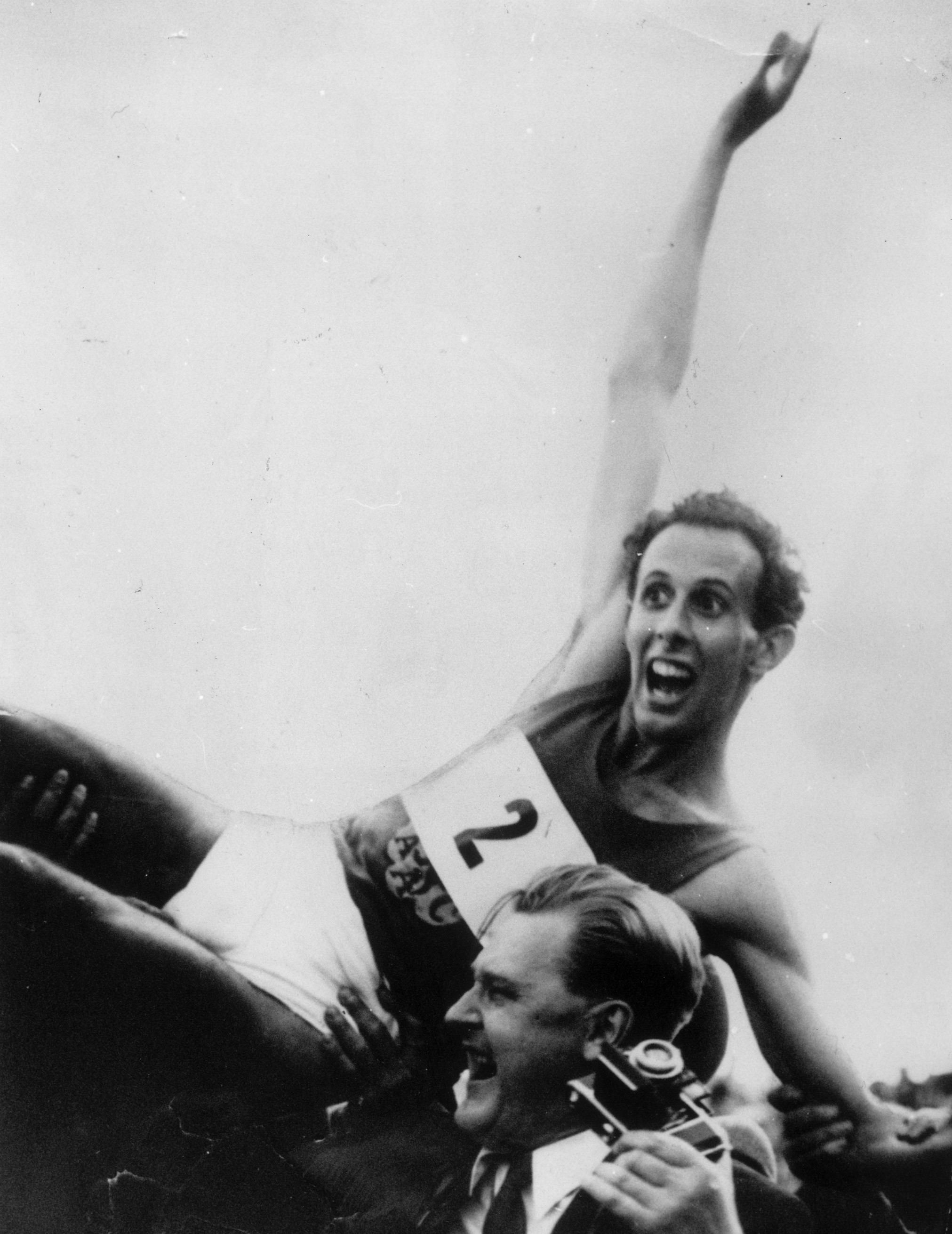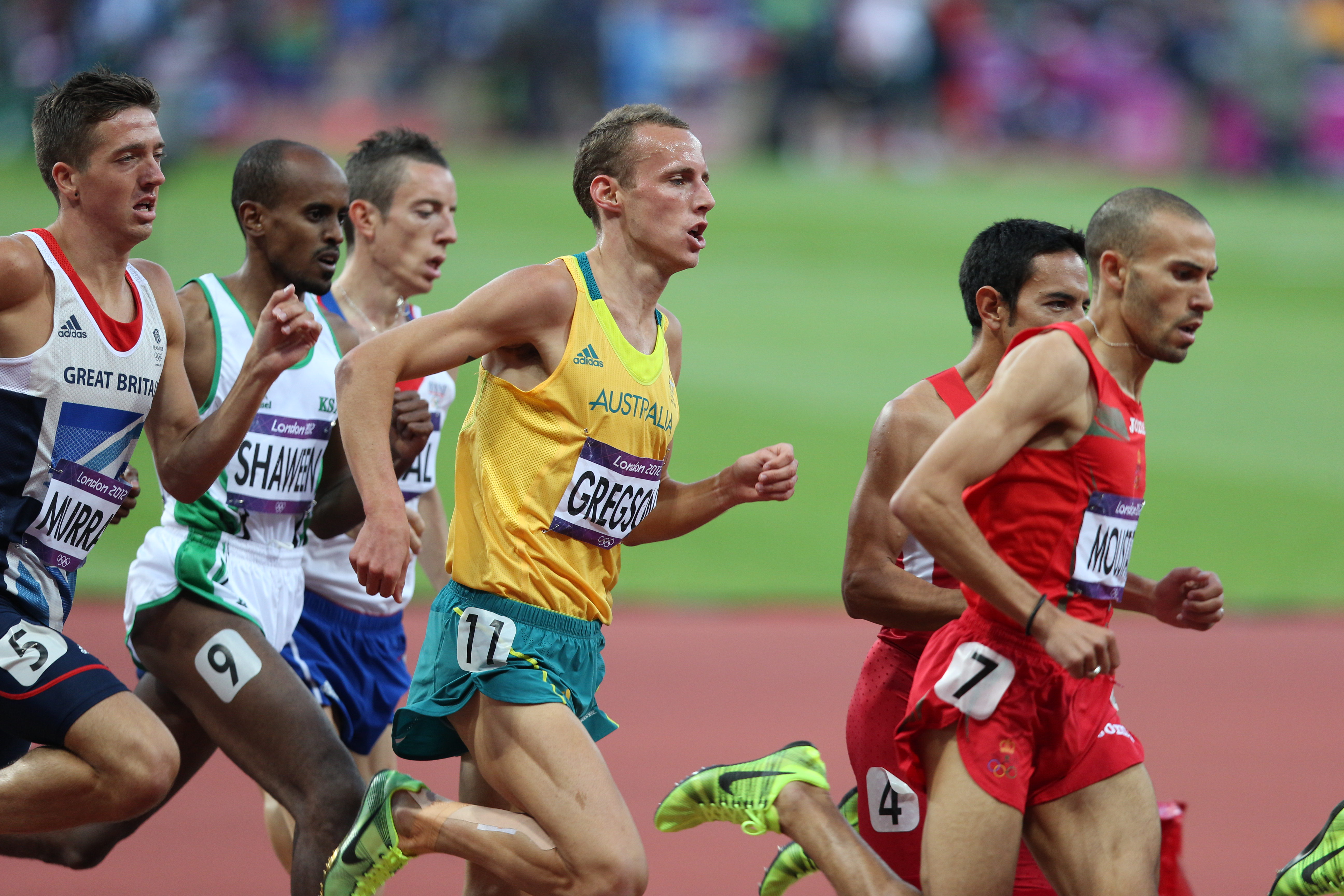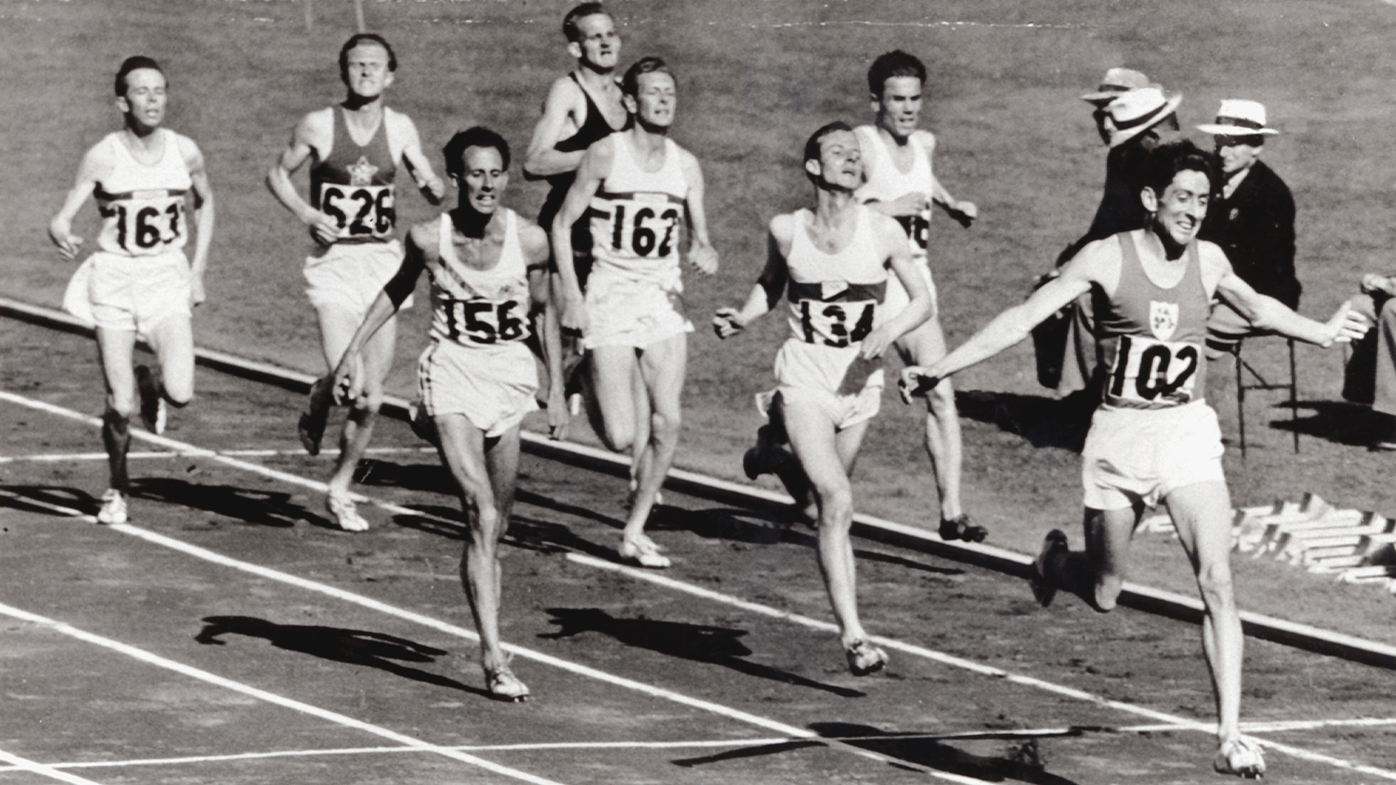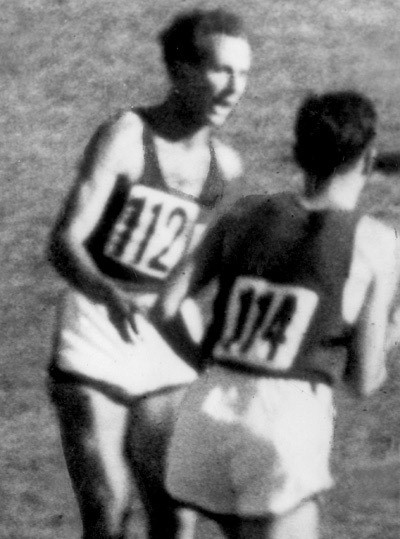One of the most iconic images of John Landy’s phenomenal running career was captured at Canada’s Empire Stadium on August 7, 1954.
Some 50 years later, that image hung on Ryan Gregson‘s bedroom wall, the pioneer of a golden age in Australian middle-distance running spurring on a boy with a dream.
Gregson never met Landy, who died on Thursday at 91, but the inspired memorabilia will forever remind the most dominant Australian mile and 1500m runner of the 2010s of the generational impact his childhood hero had.
READ MORE: Australian distance-running legend dead at 91
The picture, which Gregson still has, is a shot of Landy duelling with Sir Roger Bannister during the 1954 British Empire Games in Vancouver – a race etched in athletics folklore as the Mile of the Century.
Athletics has evolved in such a way over the 60-odd years since that it’s hard to fathom 30,000 people swarming to the Empire Stadium, 100 million watching on television from the USA and Canada, and millions more worldwide tuning in on radio to see Bannister and Landy fight for supremacy.
But Bannister and Landy were the only men in history to have achieved the once-mystical sub-four-minute mile, having done so in May and June of 1954 respectively.
As Bannister, Landy and American Wes Santee battled to become the first sub-four-minute miler, it was Bannister who made the breakthrough when he clocked 3:59.4 at Oxford University on May 6.
Landy then shattered Bannister’s world record just over a month later, posting 3:57.9 in the Finnish city of Turku on June 21.
In The Landy Era: From Nowhere to the Top of the World, author Len Johnson has breathtaking words in setting the scene for the British Empire Games showdown.
“With the clash of the only two men in the world to have broken four minutes for the mile, it was a big thing to the rest of the world, too,” Johnson’s book reads.
“It was as if, having conquered Everest, Hillary and Tenzing had squared off for the world heavyweight title.”
READ MORE: Dragons burn Rabbitohs with two spectacular tries
In what was remarkably the only race in which Bannister and Landy competed against each other, the Englishman streaked away over the final 100 metres to win in 3:58.8, his rival registering 3:59.6.
The image that some 50 years later would be postered to Gregson’s bedroom wall was taken as Landy and Bannister entered the home straight on the final lap.
Landy famously glanced over his left shoulder as Bannister surged past him on the right en route to glory.
Victory in the Mile of the Century had slipped from Landy’s grasp, but the image had nonetheless encapsulated a supremely talented and tenacious athlete fighting valiantly against English track royalty.
“John Landy was the first guy that put Australian distance running on the map with what he was doing,” Gregson tells Wide World of Sports.
“He was a rockstar back in those days. He’d race in Melbourne at a small meet and he’d get 10,000 people come to watch him attempt a sub-four-minute mile. We’d be happy with 1000 people now. This is just one guy who had the sport on his back, and he was just such a drawcard and such an entertainer with the performances he used to do.
“He inspired me.”
Not only was Landy a British Empire Games silver medallist and the second man in history to crack the sub-four-minute barrier, the Victorian competed at two Olympics and won bronze in the 1500m at the 1956 Melbourne Games.
Gregson has a glittering athletics resume of his own.
The New South Welshman held the Australian 1500m record for 10 years, from 2010 until 2020, has won three national 1500m titles, is an Olympic 1500m finalist and has run 32 sub-four-minute miles.
READ MORE: Poland refuses to play Russia in WC qualifier
It staggers Gregson that Landy ran his scorching times on cinder and grass tracks, and in spikes he describes as “terrible”.
The two-time Olympian also pointed out the lack of sports science and the fact Landy ran in the era of amateurism.
“People thought if you broke the four-minute mile you would die, your heart would explode … People just thought it was impossible,” Gregson says.
“The training they were doing in the ’50s would look a lot different to the training now. We know so much more now about the science behind what we’re doing. Back in those days they might try something for a bit and it works, so they keep doing it, but they don’t really know why they were doing it. It was so ‘hit and miss’.
“And that’s why it was so special for, 70s years ago, him to be able to get these results.
“The guys these days aren’t running that much faster.
“The guy was an absolute beast and he changed the sport and he put Australia on the map as a great miling nation.”
Landy’s incredible athleticism and impeccable character were both on display during the 1956 Australian mile championship.
He was trailing Ron Clarke, who died in 2015 as a great of Australian distance running, early on the third of four laps.
Then Clarke fell.
Landy hurdled over him and clipped him with his spikes, cutting the right side of his upper body.
In a remarkable act of sportsmanship, he then scampered back to check on the youngster.
By the time Landy had resumed the race, John Plummer had shot to the lead and established a gap of about 40 metres on the hot pre-race favourite, while two others had settled into second and third.
But Landy would mow down his rivals and charge to an extraordinary come-from-behind win.
In 1999, the Sport Australia Hall of Fame named Landy’s act the nation’s finest sporting moment of the 20th century.
It’s also been commemorated by a sculpture called Sportsmanship, established at Melbourne Olympic Park in 2002.
READ MORE: Nadal topples Medvedev in AO final rematch
“That just does not happen,” Gregson says.
“That just shows how much better he was than everyone else, and also his sportsmanship.
“That’s a legacy that will live on.
“He was a great man.”
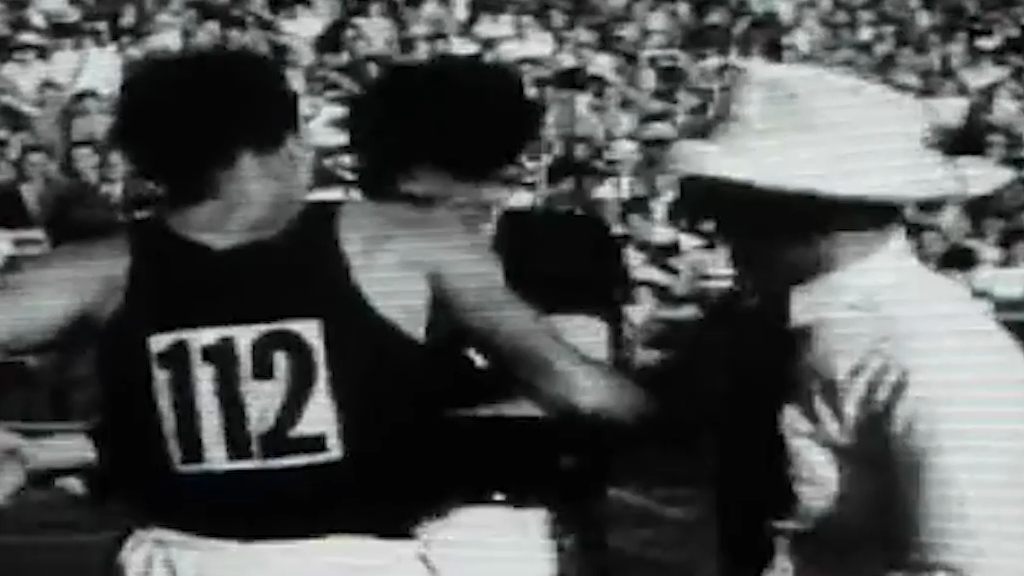
Gregson holds Landy and the other top mile and 1500m runners of the 1950s in such high esteem that he feels they share a brotherhood.
More than half a century before Gregson made his international debut at the 2009 Berlin world championships, Landy, Don MacMillan, Merv Lincoln, Albie Thomas, Jim Bailey and Herb Elliott were the leading Australian milers and 1500m runners.
Gregson, Stewart McSweyn, Ollie Hoare, Matthew Ramsden and Jye Edwards are among the modern-day custodians.
“When you break an Australian record or make an Olympic final, like these guys were doing back in the day, you feel like you’re sharing in the great Australian history of miling,” Gregson says.
“It is special, and we all have to remember it started with the forefathers, like Landy.
“He inspired generations.”
For a daily dose of the best of the breaking news and exclusive content from Wide World of Sports, subscribe to our newsletter by clicking here!
